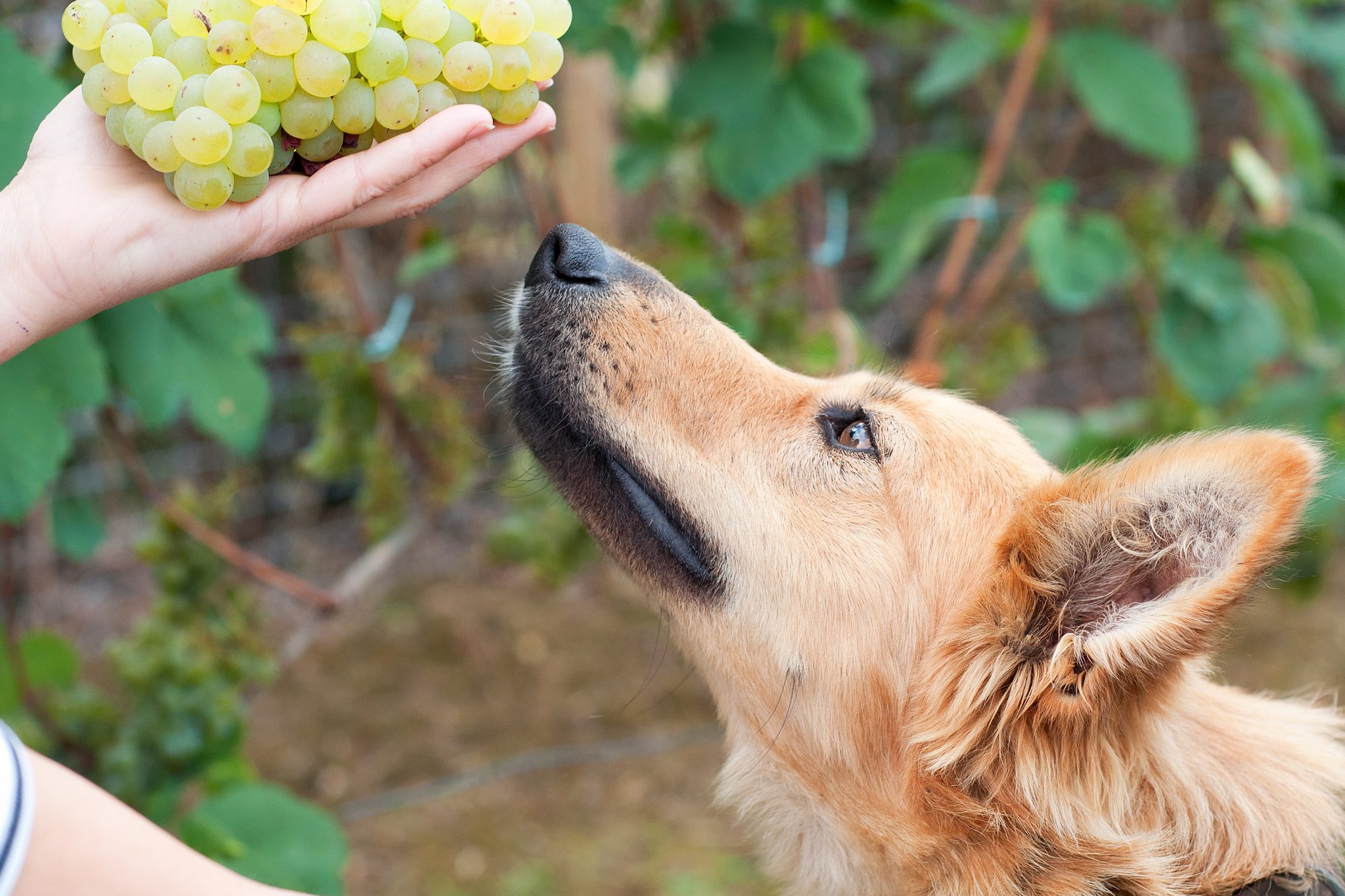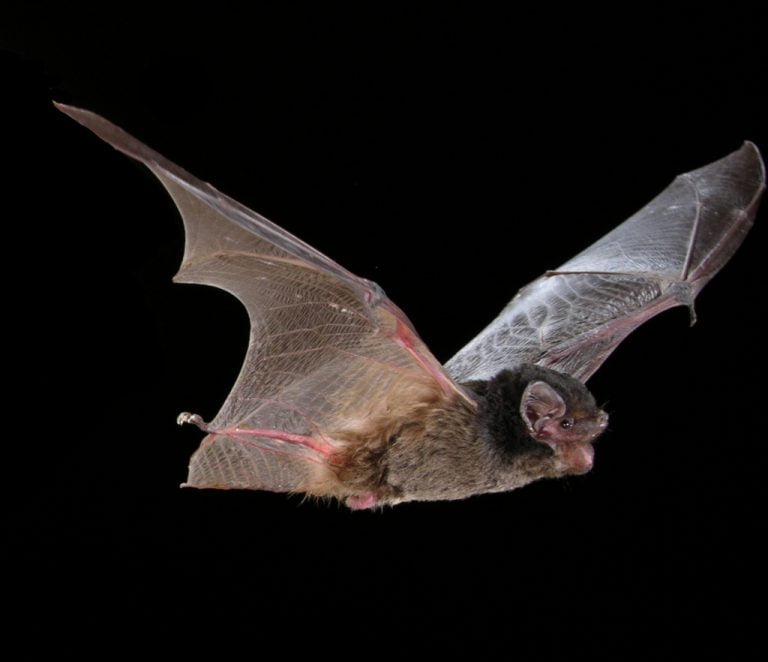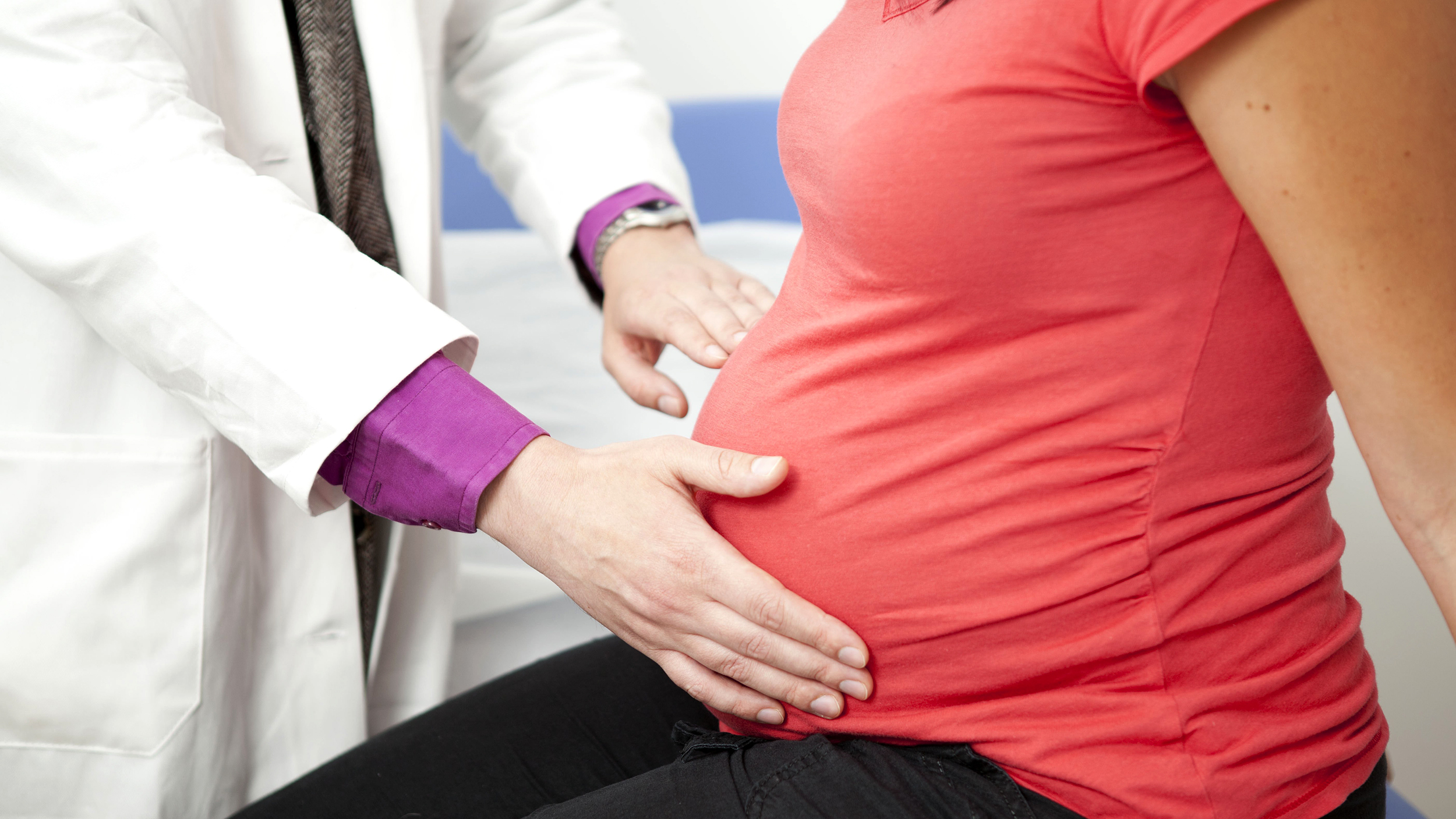
Dogs are great pets and companions. They are loyal, friendly, and always happy to be with their owners. However, as a pet owner, you must be careful with what you feed your dog. While some human foods are safe for dogs, others can be harmful and even lethal.
What Are Grapes?
Grapes are a popular fruit enjoyed by humans. They come in different colors such as green, red, and purple. Grapes are used to make wine, juice, and raisins. They are also used as a snack and a dessert. Grapes contain vitamins, minerals, and antioxidants that are beneficial to humans.
Are Grapes Safe for Dogs?

No, grapes are not safe for dogs. In fact, grapes and raisins can be toxic to dogs. The exact substance in grapes that is toxic to dogs is unknown, but it can lead to kidney failure and even death in some cases.
What Are the Symptoms of Grape Toxicity in Dogs?

The symptoms of grape toxicity in dogs may vary depending on the amount of grapes consumed and the size of the dog. Some common symptoms include vomiting, diarrhea, abdominal pain, loss of appetite, lethargy, and dehydration. If you notice any of these symptoms in your dog after consuming grapes or raisins, consult your veterinarian immediately.
What Should You Do If Your Dog Eats Grapes?

If your dog eats grapes or raisins, take them to the veterinarian immediately. Time is of the essence, and the sooner your dog receives treatment, the better their chances of recovery. The vet may induce vomiting to remove any remaining grapes in the stomach or provide supportive care such as intravenous fluids and medications.
What Are Some Safe Alternatives to Grapes for Dogs?

There are many safe and healthy alternatives to grapes that you can give your dog. Some examples include apples, bananas, blueberries, carrots, and watermelon. These fruits are low in calories and high in vitamins and antioxidants that are beneficial to your dog's health.
Conclusion
In conclusion, grapes and raisins are not safe for dogs. If your dog accidentally eats grapes, take them to the vet immediately. It is always better to be safe than sorry when it comes to your dog's health. Stick to safe and healthy alternatives such as fruits and vegetables that are beneficial to your dog's health.
Related video of Can Dogs Have Grapes?

As a pet owner, it's essential to know what kind of food is safe for your furry friend. Dogs are known to be curious creatures, and sometimes they may eat things that are not meant for them. Grapes are one of the most commonly eaten fruits, but can dogs eat grapes? This article will provide you with all the information you need to know about feeding grapes to your dog.
What are Grapes?

Grapes are juicy, sweet fruits that grow in clusters on vines. They come in different colors, including green, red, and purple. Grapes are packed with vitamins and antioxidants, making them a healthy snack for humans.
Are Grapes Safe for Dogs to Eat?

No, grapes are not safe for dogs to eat. Grapes, along with raisins and currants, are toxic to dogs and can cause kidney failure. Even a small amount of grapes can be harmful to your furry friend. Symptoms of grape toxicity include vomiting, diarrhea, lethargy, and decreased urine output.
Why are Grapes Toxic to Dogs?

The exact reason why grapes are toxic to dogs is still unknown. Some researchers suggest that it may be due to a mycotoxin found in grapes. Others believe that it may be because of the high sugar content in grapes, which can lead to digestive issues and kidney problems.
What Should You Do if Your Dog Eats Grapes?

If your dog eats grapes, raisins, or currants, you should take them to the vet immediately. Even if your dog shows no symptoms, it's best to err on the side of caution. Your vet may induce vomiting to remove any remaining grapes from your dog's stomach.
What Fruits Can Dogs Eat?

While grapes are toxic to dogs, there are plenty of other fruits that are safe and healthy for them to eat. Some of these fruits include:
- Apples
- Blueberries
- Bananas
- Strawberries
- Watermelon
Remember to always remove any seeds, pits, or cores before feeding fruit to your dog. These parts can be a choking hazard or cause digestive issues.
Conclusion
In conclusion, dogs should not eat grapes. Grapes are toxic to dogs and can cause kidney failure. If your dog accidentally eats grapes, raisins, or currants, take them to the vet immediately. There are plenty of other fruits that are safe for dogs to eat, so don't hesitate to give your furry friend a healthy treat. Remember to always do your research before feeding your dog any new food.
Related video of Can Dogs Eat Grapes?

Introduction
Chocolate is one of the most popular treats in the world, and many people love to share it with their furry friends. However, is it safe for dogs to eat chocolate? The answer is not straightforward, as chocolate can be toxic to dogs in large amounts. In this article, we will explore the relationship between dogs and chocolate and whether it is safe for them to indulge in a little bit of this treat.
Why Is Chocolate Harmful To Dogs?

Chocolate contains a compound called theobromine, which is toxic to dogs. Theobromine is similar to caffeine and can cause various health problems in dogs, including vomiting, diarrhea, seizures, and even death. The amount of theobromine in chocolate depends on the type of chocolate and the amount consumed.
Types Of Chocolate

There are three main types of chocolate: milk chocolate, dark chocolate, and white chocolate. Milk chocolate contains the least amount of theobromine and is the safest for dogs to consume in small amounts. Dark chocolate and white chocolate, on the other hand, contain higher amounts of theobromine and are more dangerous for dogs to eat.
How Much Chocolate Is Too Much?

The amount of chocolate that is toxic to dogs depends on their size and the type of chocolate consumed. As a general rule, the darker the chocolate, the more toxic it is. A small amount of milk chocolate is unlikely to cause any harm to a large dog, but even a small amount of dark chocolate can be deadly to a small dog.
Symptoms Of Chocolate Poisoning In Dogs

If your dog has consumed chocolate, be on the lookout for the following symptoms of chocolate poisoning:
- Vomiting
- Diarrhea
- Increased thirst
- Restlessness
- Hyperactivity
- Seizures
- Irregular heartbeat
- Difficulty breathing
What To Do If Your Dog Eats Chocolate
If you suspect that your dog has eaten chocolate, it is essential to act quickly. Contact your veterinarian immediately and provide them with information on the type and amount of chocolate consumed. Your veterinarian may recommend inducing vomiting or hospitalization, depending on the severity of the situation.
Alternatives To Chocolate For Dogs

If you want to treat your dog, there are many safe alternatives to chocolate, such as:
- Peanut butter (without xylitol)
- Carrots
- Apples
- Blueberries
- Pumpkin
- Plain popcorn
- Unseasoned cooked chicken
Conclusion
While dogs may enjoy the taste of chocolate, it is not safe for them to consume in large amounts. Even a small amount of chocolate can be toxic to dogs, and owners should be aware of the symptoms of chocolate poisoning. It is always best to play it safe and avoid giving your furry friend any chocolate. Instead, try some of the many dog-friendly alternatives available.
Related video of Can Dogs Eat A Little Bit Of Chocolate

Have you ever wondered if deaf people can hear their own thoughts? It's a fascinating question, and one that has puzzled many people for years. The answer, however, is not as straightforward as you might think.
What Is Deafness?

Deafness is defined as a partial or complete loss of hearing. It can be caused by a variety of factors, including genetics, infections, and exposure to loud noises. People who are deaf may communicate using sign language, written language, or other forms of communication.
How Do Deaf People Think?
Deaf people think in the same way as hearing people do, but their thought processes may be different. For example, deaf people who communicate using sign language may think in visual and spatial terms rather than in auditory terms.
Research has shown that the part of the brain that processes language is the same in deaf people as it is in hearing people. However, the way that the brain processes information may be different, depending on the person's level of deafness and their communication style.
Can Deaf People Hear Their Thoughts?

The answer to this question is not as straightforward as you might think. While deaf people cannot hear their thoughts in the same way that hearing people can, they still experience internal monologue in the form of visual and spatial thoughts.
Deaf people may also experience thoughts in the form of vibrations or sensations, rather than auditory sounds. This is because the brain processes information in a different way when it is not receiving auditory input.
Conclusion
So, can deaf people hear their thoughts? The answer is both yes and no. While they may not experience their thoughts in the same way that hearing people do, they still have an internal monologue that helps them navigate the world around them.
Related video of Can Deaf People Hear Their Thoughts?

Bulldogs are adorable and friendly dogs that are popular for their wrinkled faces and stocky build. They are also known to have a sensitive digestive system, which means owners need to be careful about what they feed them. One of the questions that many owners ask is whether bulldogs can eat grapes.
Are Grapes Safe for Bulldogs?

Grapes are a healthy and delicious fruit that many humans enjoy. However, grapes can be toxic to dogs, and this includes bulldogs. Grapes contain a toxin that can cause kidney failure in dogs. Therefore, it's essential to keep grapes away from your bulldog and never feed them grapes or raisins.
What Happens If Bulldogs Eat Grapes?

If your bulldog accidentally eats grapes, it's vital to seek veterinary care immediately. The symptoms of grape toxicity can range from vomiting and diarrhea to kidney failure. If left untreated, it can lead to death. Therefore, it's crucial to be vigilant and keep grapes and raisins out of your bulldog's reach.
What Fruits Can Bulldogs Eat?

Bulldogs can eat many fruits, but it's essential to introduce them slowly to avoid digestive problems. Some of the fruits that bulldogs can eat include:
- Apples
- Bananas
- Blueberries
- Cantaloupe
- Watermelon
These fruits are safe for bulldogs and are a healthy source of vitamins and minerals. However, it's important to remove any seeds or pits before feeding them to your bulldog.
What Should Bulldogs Eat?

Bulldogs have specific dietary needs, and it's essential to feed them high-quality dog food that meets those needs. Look for dog food that is specially formulated for bulldogs and contains high-quality protein, carbohydrates, and essential vitamins and minerals.
It's also important to feed your bulldog the appropriate amount of food for their size and activity level. Overfeeding your bulldog can lead to obesity, which can cause health problems such as joint pain, diabetes, and heart disease.
Conclusion
In conclusion, bulldogs should not eat grapes or raisins as they are toxic and can cause kidney failure. However, there are plenty of other fruits that bulldogs can eat, such as apples, bananas, blueberries, cantaloupe, and watermelon. It's important to be careful about what you feed your bulldog and to provide them with a balanced diet that meets their nutritional needs.
Related video of Can Bulldogs Eat Grapes?

Dreams are mysterious and fascinating. They are often considered as a window to our subconscious mind. But, what about blind people? Can they see dreams? This is a question that has been asked for years. In this article, we will explore this topic and find out whether blind people can see dreams or not.
What is Being Blind?

Before we dive into the topic, let us first understand what being blind means. Being blind means having little or no vision. Blindness can be caused by various reasons such as genetic disorders, accidents, or diseases like glaucoma or cataracts. Blindness can be partial or complete, and it can happen at any age.
How Do We See Dreams?

To understand whether blind people can see dreams or not, we need to understand how we see dreams. Dreams are a result of the brain's activity during sleep. Our brain creates images, sounds, and other sensations that we experience during our dreams. The brain uses our memories, experiences, and emotions to create these sensations.
Can Blind People See Dreams?

Yes, blind people can see dreams. Blind people may not have visual dreams, but they can still experience sensations in their dreams. Blind people can dream about sounds, smells, touch, taste, and emotions. They can also dream about people, places, and events that they have never seen before.
How Do Blind People See Dreams?
Blind people see dreams using their other senses such as touch, sound, smell, and taste. The brain uses these senses to create images and sensations that they experience during their dreams. For example, a blind person may dream about the sound of birds chirping, the smell of freshly baked cookies, or the taste of their favorite food.
Do Blind People Dream Differently?
Yes, blind people dream differently than sighted people. Blind people rely on their other senses to create images and sensations during their dreams. They may also have more vivid dreams than sighted people because their brain is compensating for the lack of visual stimuli.
Conclusion
In conclusion, blind people can see dreams. They may not have visual dreams, but they can still experience sensations in their dreams using their other senses. Dreams are a fascinating topic, and they can teach us a lot about ourselves and our subconscious mind. Whether we are blind or sighted, we all have the ability to dream and explore the depths of our imagination.
Related video of Can Blind People See Dreams?

Introduction
Bats are fascinating creatures that have fascinated people for centuries. They are nocturnal animals that are known for their remarkable echolocation abilities. But can bats see at all? This is a question that has puzzled many people over the years. In this article, we will explore the question of whether bats can see or not.The Anatomy of a Bat's Eye
Bats have small eyes that are located on the sides of their head. Their eyes are relatively simple compared to other animals. They have a small cornea, which is the clear outer layer of the eye, and a small lens. However, their retina, which is the layer of cells that captures light, is much larger than the retina of other animals.
Echolocation and Vision
Bats are known for their echolocation abilities, which they use to navigate and find prey in the dark. They emit high-pitched sounds that bounce off objects in their environment, and they use the echoes to determine the location of objects. However, bats also have some vision capabilities.Bats have limited vision, but they can see in low-light conditions. They use their vision to navigate during the day when they are not echolocating. They also use their vision to detect movement and to locate objects that are close to them.The Importance of Echolocation
Echolocation is critical for bats, especially when they are hunting for food. Bats emit high-pitched sounds that bounce off objects, and they use the echoes to determine the location of their prey. They can also use echolocation to avoid obstacles and navigate through their environment.
Can Bats See Color?
Bats have limited color vision, and they are not able to see the same range of colors as humans. They can see some colors, but their color vision is not as good as their vision in low-light conditions.Can Bats See in the Dark?
Bats are not able to see in complete darkness. However, they are able to see in low-light conditions. They have a high concentration of rod cells in their retina, which are specialized cells that allow them to see in dim light.How Do Bats Use Their Vision?
Bats use their vision primarily for navigation and detecting movement. They are able to detect movement very well, which is important for hunting prey. They are also able to use their vision to detect obstacles and avoid collisions.Do All Bats Have the Same Vision?
No, not all bats have the same vision. Some bats have better vision than others, and some rely more on echolocation than vision. The vision of a bat depends on its species and its environment.How Do Bats Navigate?
Bats navigate using echolocation and their vision. They emit high-pitched sounds that bounce off objects in their environment, and they use the echoes to determine the location of objects. They also use their vision to detect movement and to locate objects that are close to them.Do Bats Have Night Vision Goggles?
No, bats do not have night vision goggles. They rely on their echolocation and their vision to navigate in the dark.The Benefits of Echolocation
Echolocation is critical for bats, especially when they are hunting for food. It allows them to navigate in complete darkness and to locate their prey. It also helps them to avoid obstacles and navigate through their environment.Do Bats Have Good Eyesight?
Bats do not have the best eyesight, but they are able to see in low-light conditions. They have a high concentration of rod cells in their retina, which allows them to see in dim light.Do Bats Have Bad Eyesight?
Bats do not have bad eyesight, but their vision is not as good as their echolocation abilities. They rely more on echolocation than vision to navigate and hunt for food.The Downsides of Echolocation
Echolocation is critical for bats, but it does have some downsides. It can be disrupted by loud noises, which can make it difficult for bats to navigate. It can also be affected by wind and rain, which can distort the echoes and make it difficult for bats to locate objects.Do Bats Have Better Hearing or Vision?
Bats have better hearing and echolocation abilities than vision. However, they still rely on their vision to navigate during the day and to detect movement.The Future of Bat Research
Bat research is ongoing, and scientists are continually learning more about these fascinating creatures. As technology advances, we may be able to learn even more about how bats navigate and use echolocation.Conclusion
In conclusion, bats have limited vision, but they are able to see in low-light conditions. They rely more on echolocation than vision to navigate and hunt for food. Echolocation is critical for bats, but it does have some downsides. Bat research is ongoing, and scientists are continually learning more about these fascinating creatures.Related video of Can Bats See At All?

Breast milk is known for its high nutritional value and is the best food for infants. It contains all the essential nutrients that a baby needs to grow and develop. However, breastfeeding is not only limited to mothers who have just given birth. There are instances where women who have never been pregnant or who have not given birth for a long time can also produce breast milk. In this article, we will discuss whether it is possible for a woman to produce breast milk without being pregnant.
What is Breast Milk?

Breast milk is the natural milk produced by a woman's mammary glands after childbirth. It is a complete food that provides all the essential nutrients that a baby needs to grow and develop. Breast milk contains proteins, fats, carbohydrates, vitamins, minerals, and antibodies that help protect the baby against infections and diseases.
Can A Woman Produce Breast Milk Without Being Pregnant?

Yes, it is possible for a woman to produce breast milk without being pregnant. This is called induced lactation or relactation. Induced lactation is the process of stimulating a woman's mammary glands to produce milk without the hormones associated with pregnancy. It is usually done through a combination of physical stimulation, hormone therapy, and medication.
Why Would A Woman Want to Produce Breast Milk Without Being Pregnant?

There are several reasons why a woman might want to produce breast milk without being pregnant. One of the most common reasons is to adopt a baby and provide it with the benefits of breast milk. Another reason might be to feed a baby who was born prematurely or whose mother is unable to breastfeed. Some women may also choose to induce lactation for personal or cultural reasons.
How is Induced Lactation Done?

Induced lactation is a complex process that requires a lot of time and effort. It involves a combination of physical stimulation, hormone therapy, and medication. The process usually takes several weeks to several months to complete.
Physical Stimulation

The first step in induced lactation is physical stimulation of the breasts. This can be done through manual stimulation or by using a breast pump. The goal is to simulate the sucking action of a baby and stimulate the mammary glands to produce milk.
Hormone Therapy

The next step is hormone therapy. The woman is given hormones such as estrogen and progesterone to stimulate the growth of the mammary glands and prepare them for milk production. Hormone therapy is usually done for several weeks before the woman starts producing milk.
Medication

The last step is medication. The woman is given medications such as domperidone to increase milk production. These medications are usually taken for several weeks until the milk supply is established.
Is Induced Lactation Safe?
/431815-article-things-decrease-breast-milk-supply-5ab93ea06bf0690038f7deba.png)
Induced lactation is generally considered safe when done under the guidance of a healthcare professional. However, it can be difficult and time-consuming, and there is no guarantee that the woman will be able to produce enough milk to feed a baby. Additionally, some women may experience side effects such as breast engorgement, sore nipples, and mood changes.
Conclusion
In conclusion, it is possible for a woman to produce breast milk without being pregnant. Induced lactation is a complex process that requires a lot of time and effort. It can be done for various reasons, such as adopting a baby or feeding a premature baby. However, it is important to remember that induced lactation is not always successful, and it is essential to seek the guidance of a healthcare professional before attempting it.
Related video of Can A Woman Produce Breast Milk Without Being Pregnant?

While it's commonly believed that only women are capable of carrying and delivering a baby, there have been various claims of male pregnancy throughout history. But is it really possible? Let's examine the evidence and find out.
What is Male Pregnancy?

Male pregnancy, also known as couvade syndrome or sympathetic pregnancy, is a condition in which a man experiences symptoms similar to those of a pregnant woman. These symptoms can include nausea, weight gain, fatigue, abdominal pain, and even labor contractions.
However, it's important to note that these symptoms are not caused by a developing fetus in the man's body. Instead, they are believed to be caused by psychological factors, such as stress, anxiety, or even jealousy of the pregnant partner.
Historical Claims of Male Pregnancy

There have been several claims of male pregnancy throughout history, although most of them have been met with skepticism and disbelief. One of the most famous cases is that of Thomas Beatie, a transgender man who became pregnant and gave birth to three children.
Another case involved an unnamed man in the Dominican Republic who claimed to have become pregnant after having sex with another man. However, this claim was never scientifically proven.
Scientific Evidence Against Male Pregnancy

Despite the claims of male pregnancy, there is no scientific evidence to support the idea that men can carry and give birth to babies. The male body simply does not have the necessary reproductive organs or hormones to support a developing fetus.
Furthermore, the concept of male pregnancy goes against the basic principles of biology and reproduction. In order for a pregnancy to occur, a sperm cell must fertilize an egg cell, which then implants itself in the uterus. This process can only occur in a female body.
What is the Truth About Male Pregnancy?

The truth is that male pregnancy is a myth. While some men may experience symptoms similar to those of a pregnant woman, they are not actually carrying a baby. Instead, these symptoms are caused by psychological factors and are not related to reproduction.
It's important to remember that pregnancy and childbirth can be difficult and challenging experiences for women, both physically and emotionally. While sympathy and support for pregnant partners is important, claims of male pregnancy should not be taken seriously.
Conclusion

In conclusion, male pregnancy is not a real phenomenon. While there have been claims of men carrying and delivering babies, there is no scientific evidence to support these claims. Instead, male pregnancy is believed to be a psychological condition caused by stress or other factors.
If you or someone you know is experiencing symptoms similar to those of pregnancy, it's important to seek medical attention to rule out any underlying health conditions.